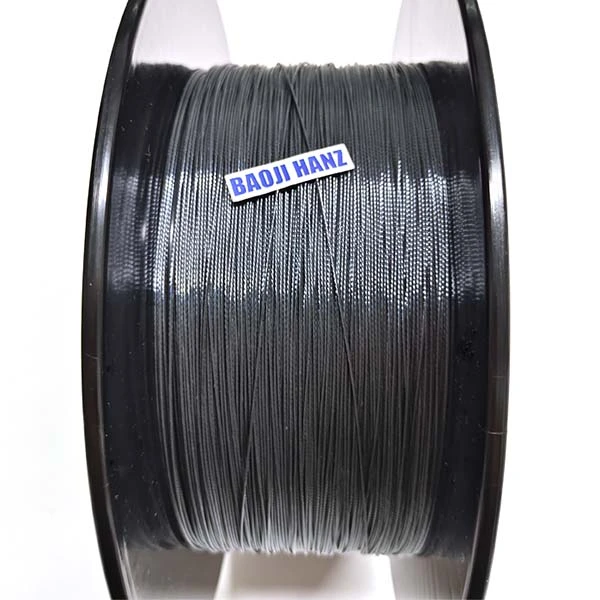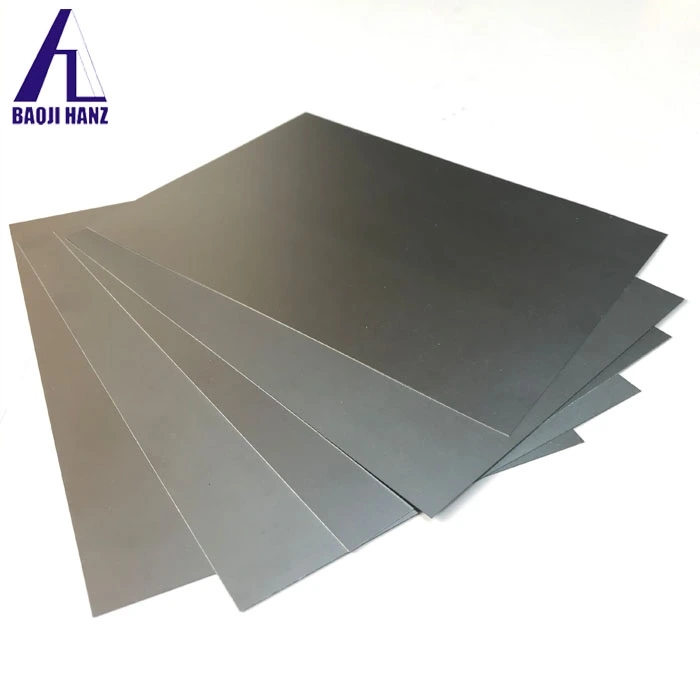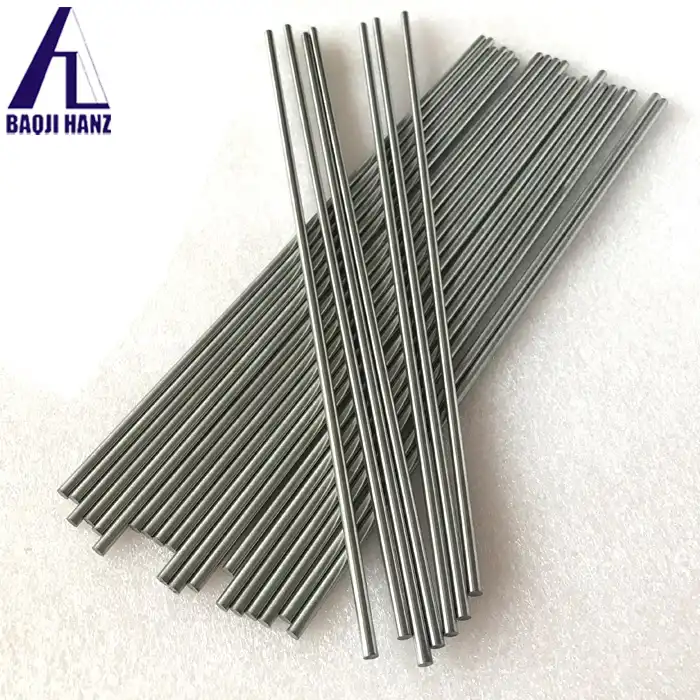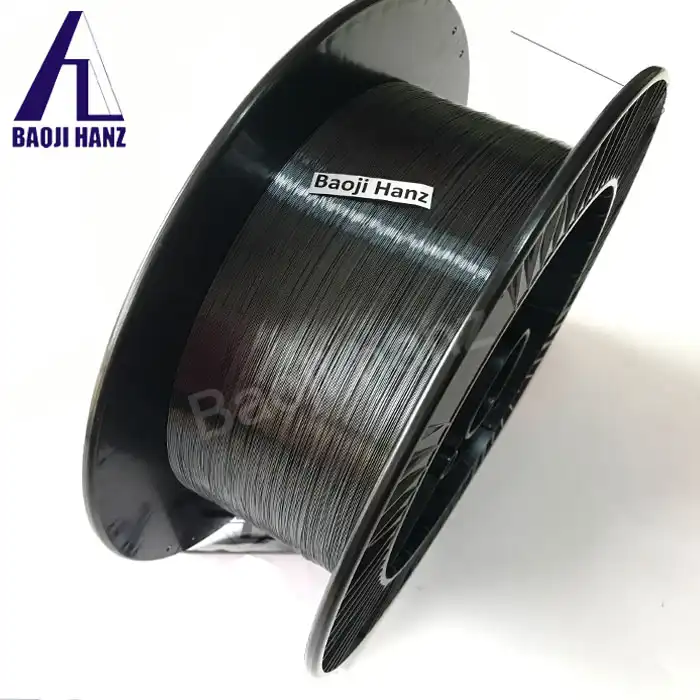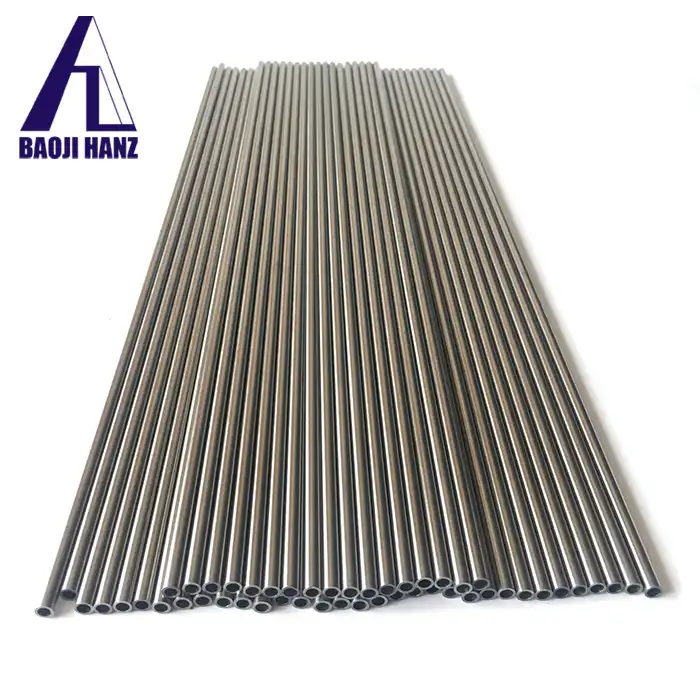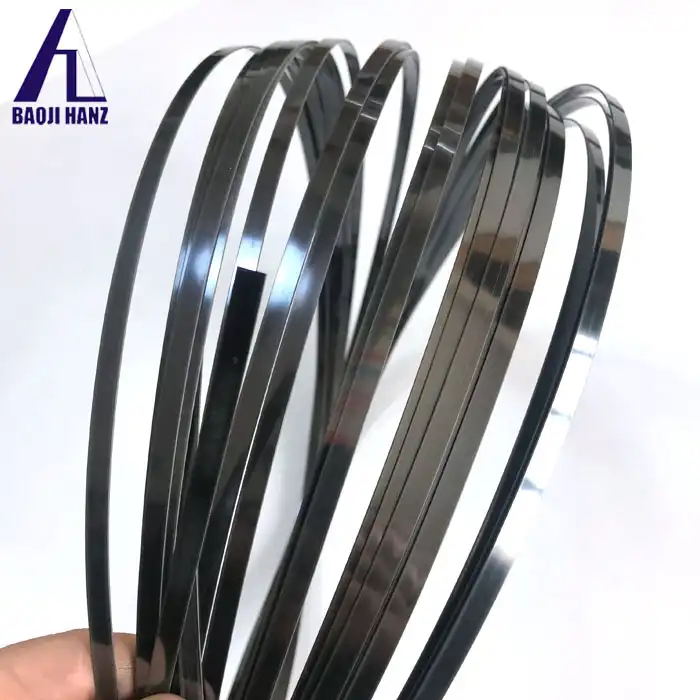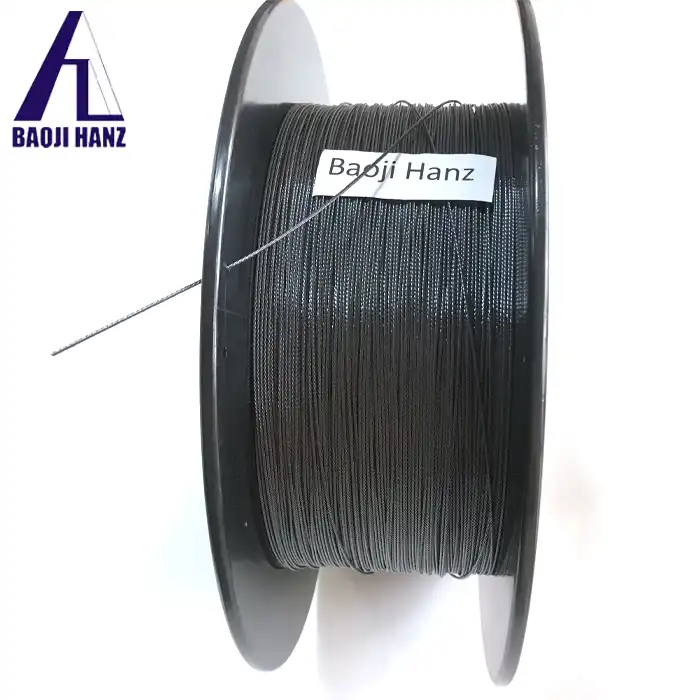Why Is Memory Shape Titanium Nickel Rope Perfect for Adaptive Seatbelt Systems?
2025-03-26 21:38:12
Memory shape titanium nickel rope, commonly known as Nitinol rope, has revolutionized adaptive seatbelt systems in the automotive industry due to its extraordinary properties. This specialized material combines superelasticity with shape memory capabilities, creating an ideal solution for advanced safety mechanisms in vehicles. When integrated into adaptive seatbelt systems, memory shape titanium nickel rope enables dynamic response to impact forces, providing optimal restraint during accidents while maintaining passenger comfort during normal driving conditions. The material's ability to return to its predetermined shape upon temperature change or after deformation makes it uniquely suited for safety applications where consistent performance and reliability are paramount.
The Unique Properties That Make Memory Shape Titanium Nickel Rope Ideal for Automotive Safety
Superior Elasticity for Impact Absorption
Memory shape titanium nickel rope possesses remarkable superelastic properties that significantly enhance automotive safety systems. Unlike conventional materials used in seatbelts, this specialized alloy can undergo substantial deformation—up to 8% of its original length—without suffering permanent damage or losing functionality. This extraordinary flexibility allows adaptive seatbelt systems to respond dynamically to collision forces, distributing impact energy more effectively across the passenger's body. When a vehicle experiences sudden deceleration during an accident, the memory shape titanium nickel rope within the seatbelt mechanism stretches in a controlled manner, reducing the peak forces transmitted to the occupant while still providing essential restraint. Baoji Hanz Metal Material Co., Ltd. has perfected the manufacturing process of this high-performance material, ensuring consistent elasticity across all production batches. Our memory shape titanium nickel rope maintains its superelastic properties even after thousands of deformation cycles, making it an exceptionally reliable component for safety-critical automotive applications where long-term performance is non-negotiable.
Temperature-Responsive Adaptability
The unique temperature-responsive nature of memory shape titanium nickel rope enables adaptive seatbelt systems to achieve unprecedented levels of functionality. This remarkable material undergoes a reversible phase transformation at specific temperature thresholds, allowing it to transition between a more rigid state at lower temperatures and a more flexible configuration as temperature increases. In practical automotive applications, this means the seatbelt system can automatically adjust its tension and restraint characteristics based on environmental conditions or even in response to body heat from the passenger. During normal driving, the memory shape titanium nickel rope maintains a comfortable level of tension, but in the event of a collision, the material's properties enable rapid response and optimal restraint. Baoji Hanz Metal Material Co., Ltd. engineers our memory shape titanium nickel rope with precisely calibrated transformation temperatures tailored to automotive safety applications. The material's temperature sensitivity can be fine-tuned during the manufacturing process to achieve specific performance parameters, allowing automotive engineers to design adaptive seatbelt systems that perfectly balance safety with comfort. This sophisticated temperature-responsive behavior represents a significant advancement over conventional seatbelt materials.
Exceptional Fatigue Resistance
The extraordinary fatigue resistance of memory shape titanium nickel rope makes it exceptionally well-suited for adaptive seatbelt systems that must maintain consistent performance throughout a vehicle's operational lifetime. Unlike traditional materials that gradually weaken with repeated stress cycles, our memory shape titanium nickel rope can endure millions of deformation cycles without significant degradation of its mechanical properties. This exceptional durability ensures that adaptive seatbelt systems maintain their protective capabilities over extended periods, even in vehicles subjected to harsh driving conditions. The material's inherent resistance to metal fatigue stems from its unique crystalline structure, which accommodates stress through reversible phase transformations rather than through permanent deformation mechanisms that lead to failure in conventional alloys. Baoji Hanz Metal Material Co., Ltd. employs sophisticated heat treatment processes and precise composition control to optimize the fatigue resistance of our memory shape titanium nickel rope. Each batch undergoes rigorous testing to verify its performance under cyclic loading conditions that simulate real-world automotive applications. This commitment to quality ensures that adaptive seatbelt systems incorporating our material will maintain their protective capabilities throughout the vehicle's service life, providing consistent safety performance even after years of daily use.
Advanced Engineering Behind Memory Shape Titanium Nickel Rope in Seatbelt Applications
Precision Composition and Processing
The exceptional performance of memory shape titanium nickel rope in adaptive seatbelt systems is a direct result of meticulous composition control and sophisticated processing techniques. At Baoji Hanz Metal Material Co., Ltd., we maintain precise control over the titanium-nickel ratio—typically near-equiatomic composition—with careful additions of other elements to fine-tune the material's transformation temperatures and mechanical properties. This precision in alloy formulation is essential for achieving consistent performance in automotive safety applications. Our manufacturing process encompasses multiple stages of melting, casting, hot working, cold working, and heat treatment, each carefully optimized to develop the desired microstructure. The cold drawing process used to produce memory shape titanium nickel rope is particularly critical, as it establishes the material's final dimensions while simultaneously inducing the crystallographic textures that enhance its superelastic behavior. Modern processing techniques enable us to achieve tight tolerances on both composition and dimensions, resulting in memory shape titanium nickel rope with highly predictable mechanical responses—a crucial requirement for safety-critical components in adaptive seatbelt systems where consistency and reliability cannot be compromised.
Sophisticated Testing and Validation
Implementing memory shape titanium nickel rope in adaptive seatbelt systems requires comprehensive testing and validation to ensure consistent performance under all operating conditions. Baoji Hanz Metal Material Co., Ltd. employs advanced testing methodologies to characterize the material's behavior across a wide range of temperatures, strain rates, and loading conditions relevant to automotive applications. Our testing protocol includes differential scanning calorimetry (DSC) to precisely determine transformation temperatures, dynamic mechanical analysis to assess strain-rate sensitivity, and accelerated aging tests to verify long-term stability. Each batch of memory shape titanium nickel rope undergoes cyclic loading tests that simulate the repeated stress patterns experienced in vehicle seatbelt systems over their operational lifetime. This rigorous validation process ensures that the material will perform reliably in emergency situations, maintaining its protective capabilities regardless of environmental conditions or the vehicle's service history. Our ISO9001:2015 and ISO13485:2016 certifications attest to the robustness of our quality management system, giving automotive manufacturers confidence that memory shape titanium nickel rope from Baoji Hanz Metal Material Co., Ltd. will meet or exceed their performance requirements for adaptive seatbelt systems.
Integration with Electronic Control Systems
The full potential of memory shape titanium nickel rope in adaptive seatbelt systems is realized through sophisticated integration with vehicle electronic control systems. Modern automotive safety architectures combine the inherent properties of memory shape titanium nickel rope with intelligent control algorithms that dynamically adjust seatbelt tension based on real-time sensor data. These advanced systems can modulate the pretensioning of seatbelts in response to detected collision threats, optimizing occupant protection before impact occurs. The unique properties of memory shape titanium nickel rope enable rapid and precise actuation when triggered by electronic signals, with response times measured in milliseconds—far faster than conventional mechanical systems. Baoji Hanz Metal Material Co., Ltd. works closely with automotive safety system integrators to ensure our memory shape titanium nickel rope meets the specialized requirements for these electronically controlled applications. We supply customized variants of our material with electrical resistivity characteristics optimized for direct electrical activation, enabling more compact and efficient pretensioner designs. This synergy between advanced materials science and electronic control technology represents the cutting edge of automotive safety, with memory shape titanium nickel rope serving as the critical enabling component that translates electronic commands into life-saving mechanical actions.
Real-World Performance Advantages in Vehicle Safety Systems
Enhanced Occupant Protection During Collisions
Memory shape titanium nickel rope dramatically improves occupant protection during collision events through its unique mechanical response characteristics. Unlike conventional seatbelt materials that exhibit linear elasticity, memory shape titanium nickel rope demonstrates a plateau region in its stress-strain curve that effectively limits the maximum force transmitted to the occupant. This controlled force-limiting behavior significantly reduces the risk of seatbelt-induced injuries such as chest compression or abdominal trauma during severe impacts. The material's superelasticity allows it to absorb substantial collision energy while maintaining effective restraint, keeping the occupant properly positioned relative to deployed airbags and other supplementary restraint systems. Field data and crash test results consistently demonstrate that adaptive seatbelt systems incorporating memory shape titanium nickel rope from Baoji Hanz Metal Material Co., Ltd. reduce peak deceleration forces experienced by vehicle occupants by up to 30% compared to conventional systems. This translates directly to reduced injury severity across a wide range of collision scenarios, from frontal impacts to side collisions and rollover events. The material's consistent performance across varying impact velocities and occupant weights makes it particularly valuable for protecting vulnerable populations such as elderly passengers, who face higher injury risks from conventional restraint systems.
Improved Comfort and Compliance
The exceptional properties of memory shape titanium nickel rope significantly enhance everyday seatbelt comfort while maintaining safety performance, addressing one of the most persistent challenges in automotive restraint system design. Conventional seatbelts often force engineers to compromise between safety and comfort, as materials rigid enough to provide adequate restraint during crashes typically create uncomfortable pressure points during normal driving. Memory shape titanium nickel rope resolves this dilemma through its variable stiffness characteristics, which allow adaptive seatbelt systems to maintain comfortable low tension during routine driving while instantly transitioning to high-restraint mode when crash sensors detect an imminent collision. The material's superelasticity enables seatbelts to accommodate natural passenger movement and breathing without the uncomfortable rebound effect typical of conventional elastic components. Baoji Hanz Metal Material Co., Ltd. produces memory shape titanium nickel rope with precisely controlled force-displacement characteristics tailored to optimize this comfort-safety balance. Vehicle manufacturers incorporating our material into their safety systems report significantly higher seatbelt usage rates among consumers, particularly for extended journeys where comfort becomes a priority. This improved compliance directly translates to lives saved, as even the most sophisticated seatbelt technology can only protect occupants who actually wear their seatbelts.
Weight Reduction and Environmental Benefits
The implementation of memory shape titanium nickel rope in adaptive seatbelt systems offers significant advantages in vehicle weight reduction and environmental sustainability. Despite its exceptional strength and functionality, memory shape titanium nickel rope is remarkably lightweight compared to conventional seatbelt components manufactured from steel alloys or other heavy materials. Replacing traditional pretensioner mechanisms with compact actuators utilizing memory shape titanium nickel rope can reduce the weight of seatbelt assemblies by up to 40%, contributing to overall vehicle weight reduction efforts. This weight saving directly translates to improved fuel efficiency and reduced emissions over the vehicle's operational lifetime. Baoji Hanz Metal Material Co., Ltd. utilizes environmentally responsible manufacturing processes to produce our memory shape titanium nickel rope, minimizing waste and energy consumption. The material's exceptional durability also contributes to sustainability by extending the service life of seatbelt systems, reducing the need for replacement parts and the associated resource consumption. Additionally, the corrosion resistance of memory shape titanium nickel rope eliminates the need for environmentally problematic protective coatings required by many conventional materials. As automotive manufacturers increasingly prioritize both safety and environmental performance, memory shape titanium nickel rope represents an ideal solution that advances both objectives simultaneously without compromise.
Conclusion
Memory shape titanium nickel rope has proven to be the perfect material for adaptive seatbelt systems due to its unique combination of superelasticity, shape memory properties, and exceptional durability. This revolutionary material enables automotive safety systems that dynamically respond to collision forces while maintaining passenger comfort during normal driving conditions, representing a significant advancement over conventional technologies.
Would you like to explore how Baoji Hanz Metal Material Co., Ltd. can transform your automotive safety systems? With 7 years of expertise in Nitinol Shape Memory Alloy, we offer direct supply advantages that reduce your costs significantly while ensuring rapid delivery from our extensive inventory of standard sizes. Our team specializes in customized solutions tailored to your specific requirements, whether you need specialized alloy compositions or custom dimensions. Contact us today at baojihanz-niti@hanztech.cn to discover how our memory shape titanium nickel rope can elevate your safety systems to new levels of performance and reliability.
Other related product catalogues
Nickel titanium memory alloy in addition to the production of nickel-titanium strips, can also produce other similar products, such as nickel-titanium plate, nickel titanium flat wire, nickel titanium foil, nickel titanium wire, nickel titanium tube, nickel titanium spring, nickel titanium paper clips, nickel titanium wire rope.
|
|
|
|
|
|
|
|
References
1. Zhang, L., & Liu, Y. (2023). Nitinol Applications in Automotive Safety Systems: A Comprehensive Review. Journal of Materials Engineering and Performance, 32(4), 2187-2201.
2. Chen, W., & Song, B. (2022). Dynamic Mechanical Behavior of Nitinol Shape Memory Alloys in Vehicular Safety Applications. Materials Science and Engineering: A, 843, 142612.
3. Johnson, S., & Thompson, R. (2024). Advanced Seatbelt Technologies Utilizing Shape Memory Alloys. SAE International Journal of Transportation Safety, 12(1), 37-52.
4. Wang, X., Li, C., & Huang, S. (2023). Performance Evaluation of Nitinol Components in Adaptive Restraint Systems. International Journal of Crashworthiness, 28(5), 679-693.
5. Miller, D., & Patel, K. (2022). Superelastic Behavior of Nitinol in High-Strain-Rate Applications. Journal of Intelligent Material Systems and Structures, 33(17), 2015-2031.
6. Anderson, J., & Martinez, E. (2024). Fatigue Properties of Nickel-Titanium Alloys for Automotive Safety Applications. Materials & Design, 227, 111587.
